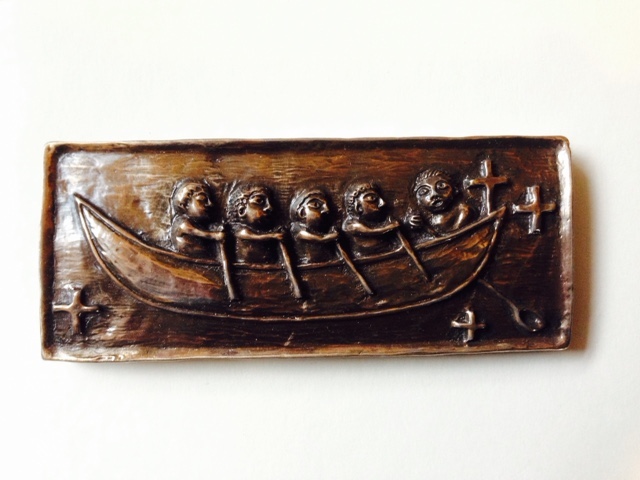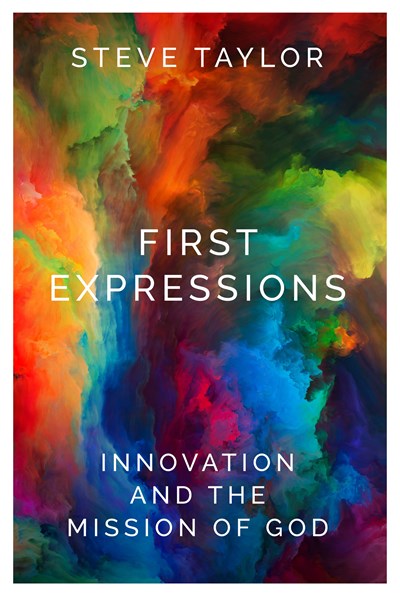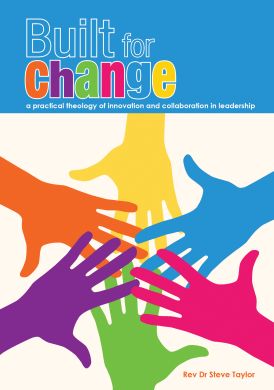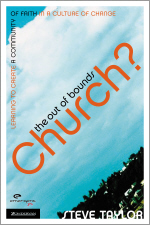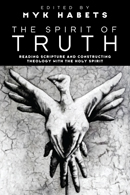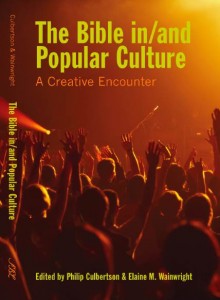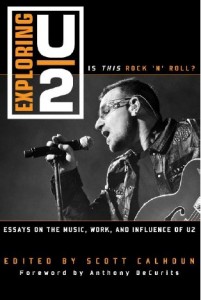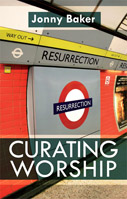Wednesday, March 02, 2016
Spotlight: a theological film review
Monthly I write a film review for Touchstone (the New Zealand Methodist magazine). Stretching back to 2005, some 90 plus films later, here is the review for February 2016.
Spotlight
A film review by Rev Dr Steve Taylor
“Spotlight” is sobering, yet compulsory viewing. It is the story of Pullitzer Prize winning reporters from the Boston Globe, who broke the story of Boston’s systematic coverup of child sexual abuse within the Catholic Church. The statistics are heart-rending, with 240 Priests implicated and over 10,000 victims.
Take a moment to consider those numbers before you read on.
Lest Touchstone readers point the finger and say “Only in America,” we have in Australia the Royal Commission into Institutional Responses to Child Sexual Abuse. At the half way stage, the Royal Commission had received 13,256 allegations, half of which relate to faith based-institutions, some of which involve priests who served in New Zealand. Research indicates that levels of pedophilia are the same in the Catholic church as in the general population. What “Spotlights” uncovers is the ability of institutions to play “here – surely – no evil, so speak no evil.”
The script is superb. To ensure factual accurancy the original reporters were interviewed. The unfolding narrative, while viewed through the reporters lens, allows us to meet victims, abusing priests, and clever lawyers. The result is an understated movie, in which illumination comes through fact, rather than emotion. This is reinforced by the actors. Stars, including Mark Ruffalo (as reporter Mike Rezendes), Micheal Keaton (as reporter Walter Robinson) and Rachel McAdams (as reporter Sacha Pfeiffer) act in ways that preserve the spotlight for the victims, rather than the red carpet.
“Spotlight” illuminates dark places in both church and city. It is the church that in the movie is shown to have paid victims to keep silence, while quietly shuffling priests into other positions. It is the city, including press, PR and lawyers, that let the perceived “no evil” of the church outweigh the pain of each child. As lawyer for the victims, Mitchell Garabedian, notes, “If it takes a village to raise a child, it takes a village to abuse them.”
The movie raises significant questions for faith. How to trust ourselves to be the church, if the church does this? One place to turn is the work of theologian and ethicist Richard Burridge. In Imitating Jesus: An Inclusive Approach to New Testament Ethics, Burridge asks how we can trust the Bible, given it was used to legitimate apartheid. Burridge notes four common approaches to reading the Bible. These include proof texting to provide rules, applying principles to life, finding examples to follow and following an overarching, singular viewpoint. Each of these approaches was evident in South Africa, both to legitimate and to protest apartheid.
Instead of giving up on the Bible, Burridge encourages a community-based approach, which insists that Bible reading occur in communities that are open, diverse and inclusive. This requires disarming the power of the pulpit and cultivating the “ordinary reader” through contextual Bible study. For Burridge, it was a lack of openness that lead the Dutch Reformed Church to justify apartheid Scripturally. For “Spotlight,” it was the lack of openness in Boston that allowed the child abuse to remain hidden. This becomes our challenge, to raise our children in villages that are open, rather than closed.
Rev Dr Steve Taylor is Principal of Knox Centre for Ministry and Leadership, Dunedin. He is the author of Built for change (Mediacom: forthcoming) and The Out of Bounds Church? (Zondervan: 2005) and writes widely in areas of theology and popular culture, including regularly at www.emergentkiwi.org.nz.
Saturday, February 27, 2016
song for the homecoming: Longtime by Salmonella Dub
It’s good to see you again my friend
It’s been a long, long time
Don’t you fall from grace
Be cool with your space
Check your place
In the race
Thursday, February 25, 2016
It takes a church to raise a minister: Theology Matters SPANZ column
As Principal of KCML, I get to write a regular column for SPANZ, the quarterly magazine of the Presbyterian Church of Aotearoa New Zealand. Here is my column for Summer, 2016.
It takes a church to raise a minister
 I am now three months into my placement as Principal of Knox Centre for Ministry and Leadership. My first day at KCML was also the first day at school for my daughter. We were “newbies” together. As we set off that morning, I found myself thinking of the African proverb, “It takes a village to raise a child.”
I am now three months into my placement as Principal of Knox Centre for Ministry and Leadership. My first day at KCML was also the first day at school for my daughter. We were “newbies” together. As we set off that morning, I found myself thinking of the African proverb, “It takes a village to raise a child.”
The proverb reminds us of the importance of relationships. Healthy communities, whether schools, churches or ministry Colleges, offer a range of relationships. These relationships, at all sorts of levels, nurture growth. That is a positive take. Equally, there is a negative take. Unhealthy communities offer a range of relationships which, because of their dysfunction and inhospitality, bring decline.
At my first KCML team meeting, I shared this sense of being new and asked the question: “If it takes a village to raise a child, does it take a church to raise a minister?” The question grabbed the teams’ attention. We found ourselves digging into Scripture. We noted the importance of relationships in the cross-cultural shifts that occurred in the church of Antioch and found ourselves giving thanks for mothers and grandmothers in the raising of Timothy. We recalled with gratitude the individuals who had given each of us as lecturers’ opportunity in ministry. We noted how certain churches and certain ministers keep cropping up in the call stories at National Assessment Weekend. My colleague, Geoff New recalled his farewell from Papakura East and the words of the Session Clerk: “We would not be the people we are now becoming without your ministry and in some strange way you wouldn’t be going to your new job at Knox except for the journey of obedience to God you have been able to take among us and with us.” The notion that it takes a church to raise a minister was ringing true.
Theologically, Christians understand God in relationships. In the Gospels we hear stories of how Jesus relates to God and vice versa. In the Creed, we find images of “dynamic relations to characterize more specifically God’s ways of relating to us” (David Kelsey, Eccentric Existence). God relates to us to create us, to reconcile us and to draw us into the making of all things new. As Christians, we worship God in relationships.
At the risk of being simplistic, let me sketch two models of theology matters. One is an institutional model of education that expects KCML to train ministers. This model might elevate ordination. Theology matters, but it risks becoming the domain of certain people, who read certain textbooks and gain certain qualifications. Perhaps this creates someone who runs the village.
Another is a relational model of education that expects the PCANZ to train ministers. This model might elevate baptism. Theology matters for disciples, for all called to love God heart, soul and mind. Theological education belongs among the whole people of God, in song and in the workplace, across all the specified ministries of the church. KCML remains, as one part of the village that raises the disciple.
This has implications for all of us. If the African proverb is true and it does indeed take a village to raise a child then theology matters. Not for certain people in certain places, but for every disciple of Jesus, called in their baptism into the mission of God.
For discussion:
1. What Bible stories and images of God help you understand the proverb: “It takes a church to raise a minister?”
2. What are the implications – for congregations, for theological colleges and the PCANZ – of a relational model of education?
Wednesday, February 24, 2016
Could you return to your story? “hapkas” theology as personal experience
“Could you return to your story?”
It was a question asked as I finished a research presentation. I was interviewing to be Principal at KCML. The interview process began with me taking a 50 minute “mock” lecture to a group of “mock” students. It had gone well, apart from the jug of water for the lecturer, that developed a crack half way through, resulting in water gently easing under my laptop as I spoke. “As long as it is consistent for all those being interviewed” I quipped. The interview process then moved, after lunch with the interview panel, to a research presentation. Fifty minutes on some aspect of my current work, followed by 50 minutes of question and answer.
It was then that the question was posed. “Could you return to your story?” Puzzled, I asked for elaboration. “Well, you began your lecture this morning with your story, of growing up in PNG. So I’m asking what might happen if you returned in your research to your story?”
I remember being struck by the depth of listening. After nearly 3 hours of talking, here was someone with the ability to connect two quite different parts of my presentations, in ways that offered me new eyes. My story felt held. My experience felt important. Perhaps in this place, I would see myself, including my old self, in new ways. It was a moment, of care, of hope, and potentially of guidance in my research journey.
Fast forward some 13 months later. The interview in January 2015 resulted in my beginning as Principal in October 2015. I brought with me a significant piece of research, a book project on innovation and collaboration. Begun in July, it has absorbed all of my writing time in the period since.
Last week, the manuscript was sent to the editor. It will return, but in the meantime, I have some space to begin again. “What will you write?” asked my family on Sunday evening. (I have a habit of spending the first 45 minutes of every work day writing.) I sifted through a few possibilities. The next most important thing is two papers I have to present in Korea at the International Association of Mission Studies. The deadline for submission is 31 March. I chose one (the second is on how to understand Silence in mission), and got to writing.
I looked at my desk yesterday. I am writing on Christology in Papua New Guinea. My research involves reading art gallery publications about bark cloth. I laughed. “Could you return to your story?” was the question 13 months ago.
Well, my first new writing project in this role and I have. I have found myself, by a random set of circumstances, writing on my country of birth. I am listening to ABC recordings of PNG women singing. I am exploring theology expressed in visual, rather than written ways. I am bringing my years of study of Christology and post-colonial theology and literature to bear on my own story. I am reading Mark Brett’s Decolonizing God: The Bible in the Tides of Empire (Bible in the Modern World). He also is born in PNG. I am beginning to imagine an academic paper presented in Korea not on powerpoint but on bark cloth.
I sense freedom, grace and integration. Such are some of the benefits when we return to our story, when the personal is woven into the academic, when deep listening enables us to see and hear ourselves in new ways.
Tuesday, February 23, 2016
“hapkas” theology as post-colonial theology
Some writing from today, part of my International Association Mission Studies paper (Fiction as missiology: an appreciation of religious change in Drusilla Modjeska’s “The Mountain”):
Theoretically, the relationship between Christianity and indigenous cultures has been understood in a number of ways. First, hagiographical. In this reading, missionaries are saints, divinely commissioned to enact God’s will. Second, oppositional. In this reading, mission is an “agent of the civilizing mission of imperialism” to quote Bill Ashcroft (Colonial Contexts and Postcolonial Theologies: Storyweaving in the Asia-Pacific, 4). It is the destroyer of indigenous cultures. Third, transformational. This approach stands with the receiver as “a way of reading the engagements of the colonized with imperial power.” (Ashcroft, in Colonial Contexts and Postcolonial Theologies: Storyweaving in the Asia-Pacific
, 4) The emphasis is on local empowerment, the ways that received messages are engaged and potentially transformed.
This third approach is tested in this paper. It will offer a reading of indigenous Papua New Guinean interaction with Christianity, arguing for a “hapkas” theology (borrowing a term used in The Mountain) as a distinct and creative ancestor Christology that empowers indigenous culture in creative responses to the received message of Christian mission.
Thursday, February 18, 2016
Creative resource: Ira
Ira is a resource I picked up at Toitu Otago Settlers Musuem today. It is a set of small, handheld cards, about 2 cm by 6 cm. It is beautifully coloured on one side, with the same picture of a New Zealand landscape. On the other side, different for each card, is a Maori word and the English translation.
I thought it had potential as a creative spiritual resource. So I purchased it and brought it back to work.
Meeting my colleagues, I shuffled it, held it beautifully coloured side up and invited them to choose one. Each chose a card, turned it over, and read the word. Looking at them, it was obvious the word had personal significance, a helpful clarifying encouragement in the middle of a hot, tiring afternoon.
The word then became a benediction from me to them as they left at days end. “Enjoy being free.” “Go to be creative.”
I will use this as my Lenten discipline, choosing a word and prayerfully sitting with it.
It would also work well in group settings. You could turn one over and as an act of praise, invite the team to reflect on what that word looks like in the values of the team. Or share a story of how they have experienced that word. Or recall a Bible story that expresses the word.
It is a beautiful, indigenous, spirituality resource.
Tuesday, February 09, 2016
complete not finished
I completed the Built for Change manuscript on Saturday. At 58,000 words and 11 chapters, it is a project I’m very pleased with. It is practical, filled with stories of change. It is probing, using Scripture, tradition and reason to respond to a range of important questions about fresh expressions innovation. Is Jesus an innovator built for change? How to understand the old in light of the new? How might we connect modern insights into leadership with the Biblical tradition? It is personal, an in-depth look at how I lead myself in innovative processes.
It has been very helpful in the transition from Principal Uniting College to Principal Knox College. At the same time, it has been demanding to write a book in what is essentially a 6 month period and I am very glad to have it behind me. Somehow completing it on Waitangi Day felt symbolic, another important step in the process of leaving Australia and earthing myself back in the richness of Aotearoa New Zealand. It is the last of the 27 pieces I wrote in Australia. I can stop “writing back reflectively” and start to think seriously about what it means to “write now” in this next season of my life.
It is complete, but not finished. It now moves into the hands of editors, who work with me on making the book a better book. The publishing company (Mediacom) have a reputation for moving rapidly, so it could well be out by the middle of the year.
Thursday, February 04, 2016
Suffragette: A theological film review by Rev Dr Steve Taylor
Monthly I write a film review for Touchstone (the New Zealand Methodist magazine). Stretching back to 2005, some 90 plus films later, here is the review for February 2016.
Suffragette
A film review by Rev Dr Steve Taylor
Suffragette is compulsory viewing, a disturbing depiction of the power of patriarchy. The movie, directed by Sarah Gavron, is a fictionalised exploration of the fight for the right of women to vote in Great Britain. If follows Maud (Carey Mulligan), a working mother with a young child, who unexpectedly finds herself caught in a street protest. Amid, the shattered glass of a shop front window, she recognizes a fellow worker Violet Miller (Anne-Marie Duff.) Despite the protests of her husband Sonny (Ben Whishaw) and threats from Polcie Inspector Steed (Brendan Glesson), she steps into the battle for justice. Forced out of home, imprisoned, brutally force-fed while on hunger strike, she embarks on an increasingly desperate quest for equality.
The movie is bleak, shot in tones of brown and drab. It is apt, given the film’s final statistics, which note the painfully slow journey toward equality. While New Zealand is a world leader, it was not until 1971 that women in Switzerland could vote.
Three places in Suffragette invite specific theological reflection. First, is the matter of unanswered prayer. The first time she is arrested, Maud’s son, George (Adam Dodd), prayed she would come home. Imprisoned for a week, his faith is shaken, both by Maud’s absence and the lack of answer to his prayers.
Second, is the ethics of protest. Are there any circumstances in which protest should become violent? This is the question around which Suffragette pivots. After years of protest through legal and political avenues, change has not occurred. The response of Suffragette is pragmatic. “It is deeds, not words, that will gain the vote.” Christian tradition has always been divided on the role of violence in the face of injustice. Martin Luther King said no, while Bonhoeffer gave his life as a yes. Historians still debate whether the violence of the women’s suffrage movement was justified. Despite the turn to violence in Suffragette, it was another sixteen years before women were given that vote.
Third, is the place of women in the church. Suffragette is set in England in 1912. Theologian Anne Phillips in her 2011 book, The Faith of Girls: Children’s Spirituality and Transition to Adulthood argues (nearly a century later) that the church remains church gender blind. Disturbed that it is mainly men that write about the faith development of women, Phillips talks to young woman about their faith. The experience helps her read the Bible afresh. She discovers richness in the vulnerability of Lo-ruhamah (Hosea 1), courage in the actions of Namaan’s slave girl (2 Kings 5(, faith in the slave girl in Philippi (Acts 16) and sacrifice on the part of the daughter of Jarius (Mark 5). Each are pre-pubsecent girls in whom the values of God are made visible. Hence Suffragette remains both a historic and a living challenge to the church. Will it value the spirituality of women? Or will it remain a place in which, to quote Inspector Steed, “their husbands deal with them”?
Rev Dr Steve Taylor is Principal of Knox Centre for Ministry and Leadership, Dunedin. He is the author of Built for change (Mediacom: forthcoming) and The Out of Bounds Church? (Zondervan: 2005) and writes widely in areas of theology and popular culture, including regularly at www.emergentkiwi.org.nz.
Saturday, January 30, 2016
New kid in class: Qualitative research into flipped learning in a higher education context
This is the abstract I have just submitted for BERA (British Educational Research Association) annual conference. What I like most is the missiology that is implicit in this abstract. Are you willing to learn from the new kid?
New kid in class: Qualitative research into flipped learning in a higher education context
Flipped learning, like any new kid in town, finds itself undergoing careful scrutiny. A Review of Flipped Learning (2013) identified the need for further qualitative research, including its potential to engage diverse learners across cultures and subgroups. This paper investigates the impact on learners when flipped learning is introduced into a higher education undergraduate theology topic. Traditionally, theology has privileged Western discourse. Can flipped learning be a useful ally in encouraging globalisation and personalisation?
A 2014 Flinders University Community of Practice research project implemented three pedagogical strategies. These included the introduction of indigenous voices to encourage personalised learning, the use of Blooms Taxonomy to scaffold activities in-class time and digital participation to cultivate the learning culture. These addressed all four pillars (Flexible Environment, Learning Culture, Intentional content, Professional educator) of flipped learning (The Four Pillars of F-L-I-P™, (2014)).
Students completed a four question written survey at the start, middle and end of the topic. The results indicated a significant shift. Students had moved from an initial appreciation of content, to a consideration of how they learn from the diversity inherent among their peers. Students perceived that the changes had enhanced their ability to communicate effectively and expressed a preference for choice, collaboration and diversity. However, feedback from Student Evaluation of Teaching responses, assignments and interaction with students was mixed. While overall people affirmed flipped learning, some expressed a desire to return to traditional lecture modes.
This data can be theorised using the notion of learning as a social act, shaped by learner agency. Preston (“Braided Learning,” 2008) observed that students fill different roles in an on-line learning community. Some act as e-facilitators, others as braiders or accomplished fellows. Each of these roles depend on agency being given to, and received by, fellow learners. Student assignments demonstrated that these roles were present during in class-time and further, that the pedagogical strategies implemented were essential in inviting students into these roles. In contrast, students who expressed concern about flipped learning indicated either a desire to preserve the percieved purity of an objective academic experience or a reluctance to trust student agency.
This suggests that the success of flipped learning depends not on the technological ability to produce videos. Rather it depends on pedagagical strategies, including those that help learners appreciate agency in their peers. In sum, the desire to learn from any new kid in the class remains at the core of the educative experience.
– Dr Steve Taylor, Vice Chancellor’s Awards for Excellence in Teaching, Flinders University, South Australia
References
Flipped Learning Network (2014). The Four Pillars of F-L-I-P™. http://flippedlearning.org/cms/lib07/va01923112/centricity/domain/46/flip_handout_fnl_web.pdf.Hamdan, Noora, McKnight, Patrick, McKnight, Katherine and Kari M. Arfstrom (2013). A Review of Flipped Learning: A White Paper Based on the Literature Review.” http://www.flippedlearning.org/cms/lib07/VA01923112/Centricity/Domain/41/WhitePaper_FlippedLearning.pdf.
Preston, C. J. (2008). “Braided Learning: An emerging process observed in e-communities of practice.” International Journal of Web Based Communities 4 (2): 220-43).
Keywords: flipped learning, diversity, higher education
It is a development of work I presented in 2015 at ANZATS and HERGA, but this time with clear focus on flipped learning. I will hear by 11 March if the proposal is accepted. The BERA conference is September 13-15 in Leeds, so might well fit beautifully with the Ecclesiology and Ethnography conference, 6-8 September in Durham and Lines in Sand, 18th Biennial Conference of the International Society for Religion, Literature and Culture, 9-11 September in Glasgow. Or it might be a stretch too far. We will see. Good to have an abstract entered and grateful for the time and encouragement of Dr Katy Vigurs in looking over a draft of my abstract.
Friday, January 22, 2016
reading a “settler” (Presbyterian) church missiologically
The Presbyterian Church of Aotearoa New Zealand describes itself as a “settler church.” (here). It’s founding story is expressed in the narrative of Scottish and English settlers wanting to build a better world for themselves and their families, followed by post-World War II emigration patterns, as Dutch, European, then Pacific Island and Asian migrants arrived in New Zealand.
This “settler” narrative shapes identity. It can be contrasted with “missionary” beginnings, as in the case of Anglican, Methodist and Catholic denominations in New Zealand. It can be placed in an uneasy tension in relation to engagement with Maori.
I am interested in reading this “settler” narrative missiologically. My hunch is that in the PCANZ history there are some rich cross-cultural insights. I was alerted to this in reading Migrations: Journeys in time and place, by Rod Edmond, a few years ago. Edmond traces his Scottish forbears. One of the stories is of Presbyterian missionary, Charles Murray. Charles comes to NZ after a short period of missionary service on the island of Ambryn, Vanuatu. He then serves as a Presbyterian minister in Carterton (1888-98), Fielding (1898 -1906), Sydenham (1902-1919) and Matawhero (1919-1920). Ferguson writes that “The missionary impulse never deserted Charles.” (Migrations
, 193). Evidence includes establishing home mission stations in Fielding, travelling in support of Maori Mission and urban mission in Sydenham. In addition, he continued to write to support the (then) New Hebrides Mission and took a public stand for pacifism during WW1. All of this is in continuity with his cross–cultural experiences. “Throughout his life Charles had worked at the frontiers of the church – the slums of Aberdeen, the Pacific, the new rural towns of the Wairarapa and Manuwatu, a large working-class suburb of Christchurch and now a remote East Coast settlement.” (Migrations
, 203). The life of Charles Murray is an example of mission, in particular, cross-cultural mission, shaping this so–called “settler” church, in this case over 32 years in four locations.
My hunch is this gives us some important ways to understand ourselves missiologically today. My interest is two fold. First, I am interesting in finding other such stories and asking how these stories disturb the “settler” narrative. Second, I am interested in considering the missiological shape these stories might give to the unfolding story of the PCANZ today.
Thursday, January 21, 2016
culture and gospel insight
“Maungarongo (pointing to the name). The name of your marae means peace or reconciliation. That word was always here, in our (Maori) language. But the Bible drew it out, made the word visible and grow among us.” – (A comment during one of the speeches, made by a spokesperson for the Maori King, during the Powhiri for the re-opening of Maungarongo Marae, in Ohope.)
A fascinating way to understand culture and gospel. The host culture is respected (That word was always here). The arrival of Christianity is noted (the Bible drew it out). You can’t have gospel without culture. Such is the result of the Word made flesh.
Yet culture with Gospel enriches, causes, in this case, peace and reconciliation to flow. What does it mean for Christians to approach culture looking for what is already there?
Tuesday, January 19, 2016
marae opening
It was an wonderful privilege over the weekend gone to represent KCML at the re-opening of the Maungarongo Marae, in Ohope. The marae is the courtyard of Te Aka Puaho (Glowing vine), the Presbyterian Maori Synod of the Presbyterian Church of Aotearoa New Zealand. (For the history of the marae, go here).
The re-opening began with an Awakening the Dawn ceremony. Beginning at 4 am, it involved prayer in language, offered by a wide variety of religious groups.
On the way into the marae, you pass some maihi, the carved archway, which for many years was a gift from Te Wanangi a Rangi to KCML. They lived in Dunedin and were a visual reminder to staff and students on a daily basis that there was a Covenant between Te Wanangi a Rangi and KCML. In 2007 these old friends returned here to Ohope.
Seeing them at Ohope is a reminder of the history of bi-culutural training partnership between Te Wanangi a Rangi and KCML which has enriched over so many years.
There is a Maori Proverb
He tangata ke koutou, He tangata ke matou
I roto i teni whare, tatou, tatou e
In English,
You are one people, and We are one people
Yet, within this house, we are one together.
With the marae closed in recent months, we at KCML have been weakened by the distance. Now, with re-opening of the marae, there is a chance for the relationship to be strengthened. In opening the marae, we at KCML brought a koha, a gift.
It is a picture of Knox, painted by the partner of a staff person. We give it to this marae, in the hope that it might live in this house, this marae. In the hole it has left at KCML, we will place a picture of this marae.
We offer this as a prayer that – I roto i teni whare, tatou, tatou e
Thursday, January 14, 2016
3 month anniversary: an emotional and grateful reflection
 This week marks 3 months since I began as Principal of Knox Centre for Ministry and Leadership. I celebrated the one week milestone with some thoughts and it seems appropriate to repeat the practice.
This week marks 3 months since I began as Principal of Knox Centre for Ministry and Leadership. I celebrated the one week milestone with some thoughts and it seems appropriate to repeat the practice.
I returned to work this week and found myself awaking each day profoundly grateful that I’m called to this role, at this time and place. I am so appreciative of the space to innovate, the genuine invitation and repeated expectation that KCML will live into its mission to train the whole people of God. I am excited by the possibilities that have been generated in staff conversation and at a two day staff retreat in December. While these are still embryonic and face many more conversations with key stakeholders, there is a whole host of creative, connective, ideas beginning to take shape. I am grateful for the resources that come with the KCML space. This includes the team, the variety of financial stakeholders, along with the enormous goodwill and generosity I’ve experienced, repeatedly, within the Presbyterian church and the KCML team. Very quickly as a team we have moved into constructive, prayerful, accountable relationships that are a delight to participate in. They are a group joyfully facing a new future.
This is a great role, in a great place. Long may the honeymoon continue 🙂
Tuesday, January 12, 2016
Paul: the apostolic team builder
This is certainly consistent with how Paul leads. He is a team builder. Of the 13 letters that claim Pauline authorship in the New Testament, more than half (seven in total) are team efforts. Paul and Sosthenes write 1 Corinthians. Paul and Timothy write 2 Corinthians, Philippians, Colossians, Philemon, while Paul, Silas and Timothy write 1 and 2 Thessalonians. The six letters written by Paul are Romans, Galatians, Ephesians, 1 and 2 Timothy, Titus.
The book of 1 Corinthians is rich in alliances and networks, in which “All the brothers and sisters here send you greetings” (16:20). The letter is co-authored (1:1) and is the result of a report from Chloe’s household (1:11). Paul has baptised Crispus, Gaius (1:14) and the household of Stephanas (1:15). Paul exercises ministry alongside Apollos (3:5), Barnabas (9:6), Timothy (16:10) and Apollos and the brothers (16:12). Paul’s understanding of servant in chapters 3 and 4 is in the plural. The church is a body, with different gifts (12:4). Paul greets the household of Stephanas (16:15) and shares greetings from the churches in Asia, Aquila and Priscilla and their house church (16:19). He is grateful that his ministry has been “resourced managed” by Stephanas, Fortunatus and Achaicus (“they supplied what was lacking” 16:17). This represents ten individuals, three house churches and three other groupings of churches. This is a connected leader enmeshed in alliances and networks.
(An excerpt from upcoming Built for change: innovation and collaboration in leadership).
